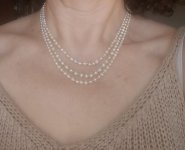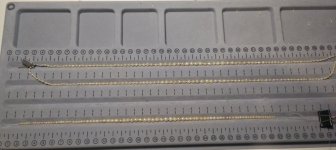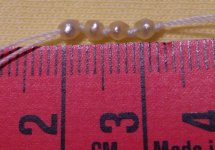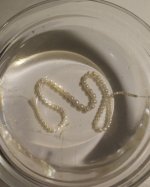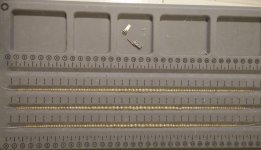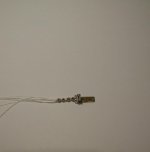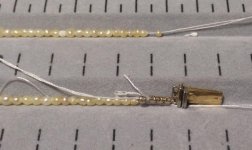Thanks for all the advice and encouragement. It probably will take a while to assemble all the materials and find the time to work on it calmly.
The supplier I found for the little gold beads has them in 2.5 mm size with a hole of 1-1,2 mm. Is that hole too big? Will the knots go into the holes? The supplier has balls of 4 mm or larger with holes of 0.8-1.0 mm in diameter, but I think those beads might be too bug.
I thought I would take a before shot so you could see how it looks now and provide suggestions. Clearly the distance between the short and the middle strand is larger than the distance between the middle and the longest strand. I think I would like a distance in the middle between those two. What would that translate to in difference in length of the strands?
The supplier I found for the little gold beads has them in 2.5 mm size with a hole of 1-1,2 mm. Is that hole too big? Will the knots go into the holes? The supplier has balls of 4 mm or larger with holes of 0.8-1.0 mm in diameter, but I think those beads might be too bug.
I thought I would take a before shot so you could see how it looks now and provide suggestions. Clearly the distance between the short and the middle strand is larger than the distance between the middle and the longest strand. I think I would like a distance in the middle between those two. What would that translate to in difference in length of the strands?

